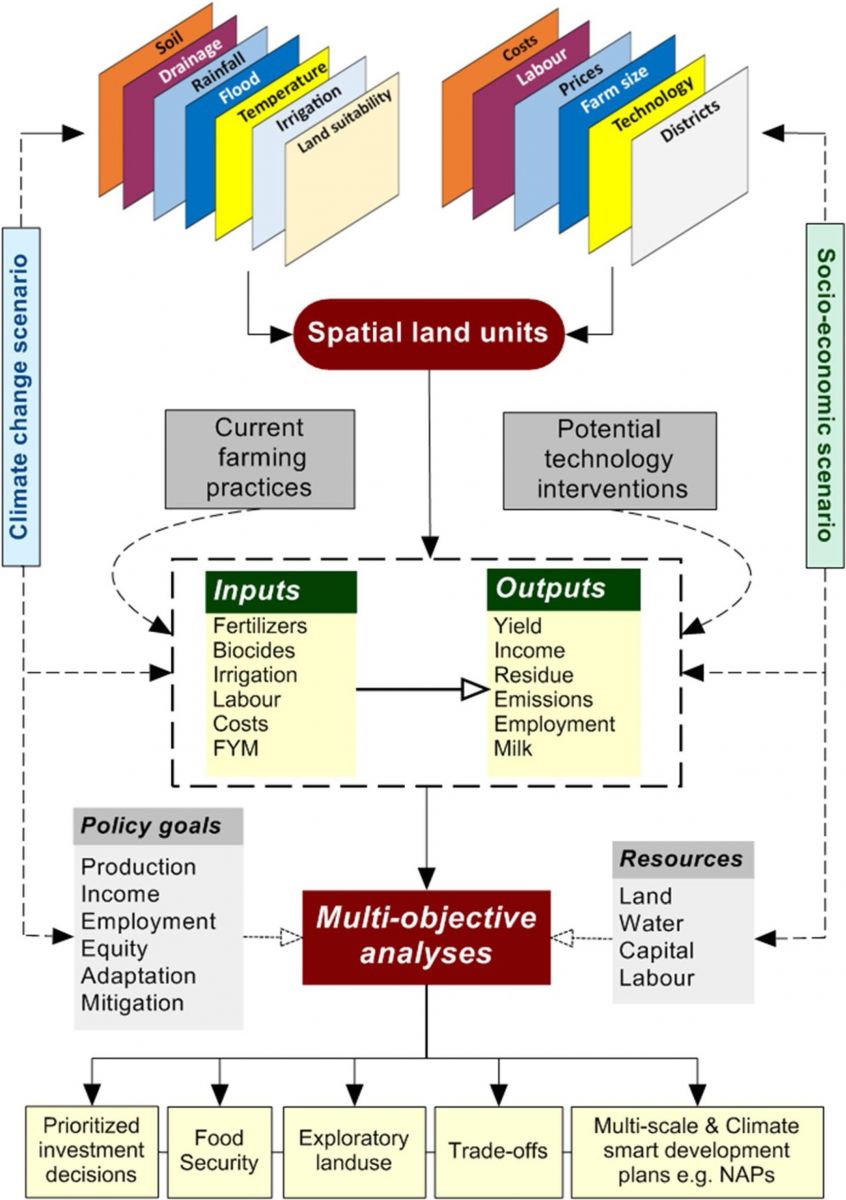Decision support tool to help guide investments in a climate-affected agriculture sector
By Shehnab Sahin
A recent journal article outlines the modelling framework for a toolkit to help prioritize climate-smart agricultural technologies and practices.
The task of policymakers—making the best decisions for the people they govern—is not an easy one. In the context of agriculture under climate change, the task is made even more challenging, as climate risks compound the existing complexities of decision-making in the sector. Confronted with a diversity of contexts, numerous future scenarios, and often limited budgets, policymakers must arrive at the most optimum solutions and practices.
To help policymakers make informed choices for the sector that will help to build resilience now and in the future, scientists from the CGIAR Research Program on Climate Change, Agriculture and Food Security (CCAFS) developed the Climate-Smart Agriculture Prioritization Toolkit (CSAP).
About the toolkit
The CSAP toolkit deploys a dynamic, spatially-explicit multi-objective optimization model to explore a range of pathways for agricultural growth together with climate adaptation strategies to meet the goals of agricultural development and environmental protection. The three major components of the toolkit are:
- land evaluation including assessment of resource availability, land suitability, yield and input-output estimation for all promising crop production practices and technologies for key agro-ecological units;
- formulation of scenarios based on policy views and development plans; and
- land-use optimization in the form of linear programming models.
The toolkit supports analysis of agricultural production goals in relation to multiple other objectives (including food self-sufficiency, employment, incomes and mitigation targets) by integrating detailed, bottom-up bio-physical, climate impact and agricultural emissions models. It can therefore guide a wide range of analyses, including food security assessments, environmental impact assessments and preparation of development plans to scale climate-smart practices.

Figure 1: Schematic diagram of the CSAP toolkit illustrating key components and their relationship. Source: Dunnett et al. 2018
In a recent paper published in Ecological Modelling, the current formulation of the toolkit was further explained via a mathematical modelling framework. The toolkit is flexible, with the capability to model agricultural production at a range of spatial and temporal scales. CSAP supports climate-smart agricultural development by providing a means for carrying out detailed scenario analyses in the context of climate adaptation. Importantly, it provides valuable bottom-up evidence for top-down estimates of the costs of climate change adaptation.
The toolkit allows users to make robust decisions under a set of uncertain circumstances. It enables trade-off analyses of alternative climate-smart agriculture development pathways, constraining the adaptation options to a limited set of viable alternatives and providing the information required to support prioritization decisions.
A case study application of the toolkit was done for the Eastern Indian state of Bihar in India, which is highly vulnerable to climatic risks. Conditions in the region—which suffers from devastating floods, frequent droughts and extreme heat stress—are particularly adverse for food production. In the study—which considered major crops like maize, rice, pulses, wheat, and mustard—the toolkit was able to provide information such as the optimum type and level of technology use for different crops; investment required; and total food production for various portfolios of climate-smart agriculture (CSA) options across different time periods, given both baseline and future scenarios.
Such information can be highly valuable for prioritizing CSA investments for particular crops/cropping systems or locations in the short term (2020) while allowing for the identification of priorities for medium (2050) and long-term (2080) agricultural growth pathways. The analysis can also tell us about the optimal land use strategy and crop-technology mix for specific regions over different timescales.
The Bihar case study highlights that the investment required for adaptation to climate change has been rapidly increasing. It is thus increasingly important that investments are context-specific and effective. Summarizing the benefits of using the toolkit, Paresh Shirsath, Associate Scientist at CCAFS and a principal contributor to the paper, noted, “tools like CSAP bring analytical rigor in planning processes and help in making investment decisions which are robust against the uncertainties brought about by climate variability and change”.